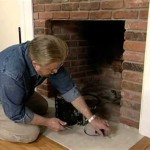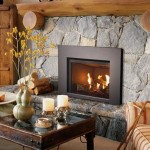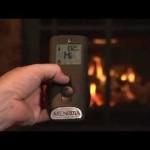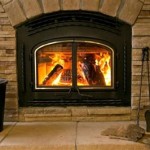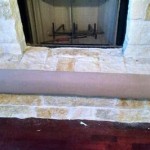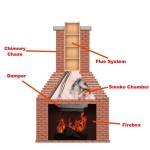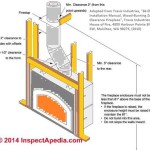Unvented Gas Fireplaces: Understanding Their Function, Safety, and Applications
Unvented gas fireplaces, also known as vent-free or ventless gas fireplaces, offer a heating solution that differs significantly from traditional wood-burning or vented gas fireplace systems. These units are designed to operate without a chimney or flue, directly releasing the heat generated from combustion into the room. Understanding their operational principles, safety considerations, and optimal applications is crucial before considering their installation.
How Unvented Gas Fireplaces Work
The core principle behind unvented gas fireplaces revolves around complete combustion. These fireplaces are engineered to burn gas, typically natural gas or propane, with a high degree of efficiency. This complete combustion is essential for minimizing the production of harmful byproducts such as carbon monoxide (CO), nitrogen dioxide, and soot. Sophisticated burner designs and oxygen depletion sensors (ODS) play pivotal roles in ensuring this process occurs safely.
The ODS is a critical safety component. It continuously monitors the oxygen levels in the room. If the oxygen level drops below a pre-determined threshold, indicating potentially incomplete combustion and a buildup of carbon monoxide, the ODS will automatically shut off the gas supply to the fireplace, preventing further operation until the room is properly ventilated. This functionality is paramount for mitigating the risks associated with carbon monoxide poisoning.
The heat produced during combustion is directly radiated and convected into the surrounding space. Because there's no venting system, virtually all the heat generated is retained within the room, resulting in high energy efficiency. This characteristic makes unvented gas fireplaces attractive for supplemental heating purposes in specific areas of a home.
Safety Considerations and Regulations
While designed with safety features, unvented gas fireplaces are subject to stringent safety regulations and require careful consideration before installation and use. The potential for carbon monoxide production, even with highly efficient combustion, necessitates adherence to specific guidelines.
Local building codes often regulate or even prohibit the installation of unvented gas fireplaces. It is essential to consult with local authorities and building inspectors to determine the permissibility and specific requirements in a given jurisdiction. These regulations may dictate factors such as room size minimums, ventilation requirements, and maximum BTU output for unvented appliances.
Adequate ventilation is crucial. Even with a functioning ODS, regular air exchange is necessary to maintain healthy indoor air quality. This might involve opening windows periodically or utilizing other mechanical ventilation systems. Proper ventilation helps prevent the buildup of moisture and pollutants related to combustion.
Furthermore, unvented gas fireplaces should never be operated in enclosed spaces such as bedrooms or bathrooms due to limited ventilation. They are generally intended for use in larger, more open living areas where air circulation is more readily available. Regular maintenance, including cleaning the burner and inspecting the ODS, is essential for ensuring continued safe operation.
Appropriate Applications and Limitations
Unvented gas fireplaces are best suited for supplemental heating in specific situations where their inherent advantages are maximized and potential drawbacks are minimized. Their high energy efficiency makes them appealing for providing targeted warmth to frequently used areas of a home, such as living rooms or family rooms.
They can be particularly useful in situations where installing a traditional vented fireplace is impractical or cost-prohibitive. For example, in existing homes without chimneys, an unvented unit can provide the ambiance and warmth of a fireplace without the substantial construction costs associated with installing a venting system.
However, their limitations must be acknowledged. They are not intended to be primary heating sources for an entire home. Relying solely on an unvented gas fireplace for heating can lead to uneven temperature distribution, excessive moisture buildup, and potential air quality concerns.
Individuals with respiratory sensitivities, allergies, or pre-existing health conditions should exercise caution when considering the use of unvented gas fireplaces. The combustion byproducts, even at low levels, can potentially exacerbate respiratory issues. A thorough assessment of personal health factors is recommended before installation.
Ultimately, the decision to install an unvented gas fireplace should be based on a comprehensive evaluation of individual needs, local regulations, safety considerations, and the specific characteristics of the living space. Consulting with qualified HVAC professionals or fireplace installers can provide valuable insights and ensure proper installation and operation if the use of an unvented system is deemed appropriate.
:max_bytes(150000):strip_icc()/ventless-gas-fireplaces-4160746-hero-f9d4bdcd9bd446eb84406de306f790ba.jpg?strip=all)
How To Pick Out A Ventless Gas Fireplace

What Is A Ventless Gas Fireplace Experts In Gaithersbutg Md

Vent Free Gas Fireplaces Inserts Stoves Napolis Godby Hearth And Home

Duluth Forge Dual Fuel Ventless Gas Fireplace 26 000 Btu T Stat Control Antique White Finish 170130 The Home Depot

Superior 32 Inch Vent Free Gas Firebox Vrt3132 North Country Fire

Vent Free Archives SÓlas Contemporary Fireplaces

Considering A Ventless Gas Fireplace Here S What You Need To Know Bob Vila

Is An Unvented Gas Fireplace More Efficient Than A Condensing Furnace Energy Vanguard

Duluth Forge Dual Fuel Ventless Gas Fireplace 26 000 Btu T Stat Control Antique White Finish Com

Pleasant Hearth 18 Dual Fuel Wildwood Vent Free Gas Log Set 30 000 Bt
Related Posts

